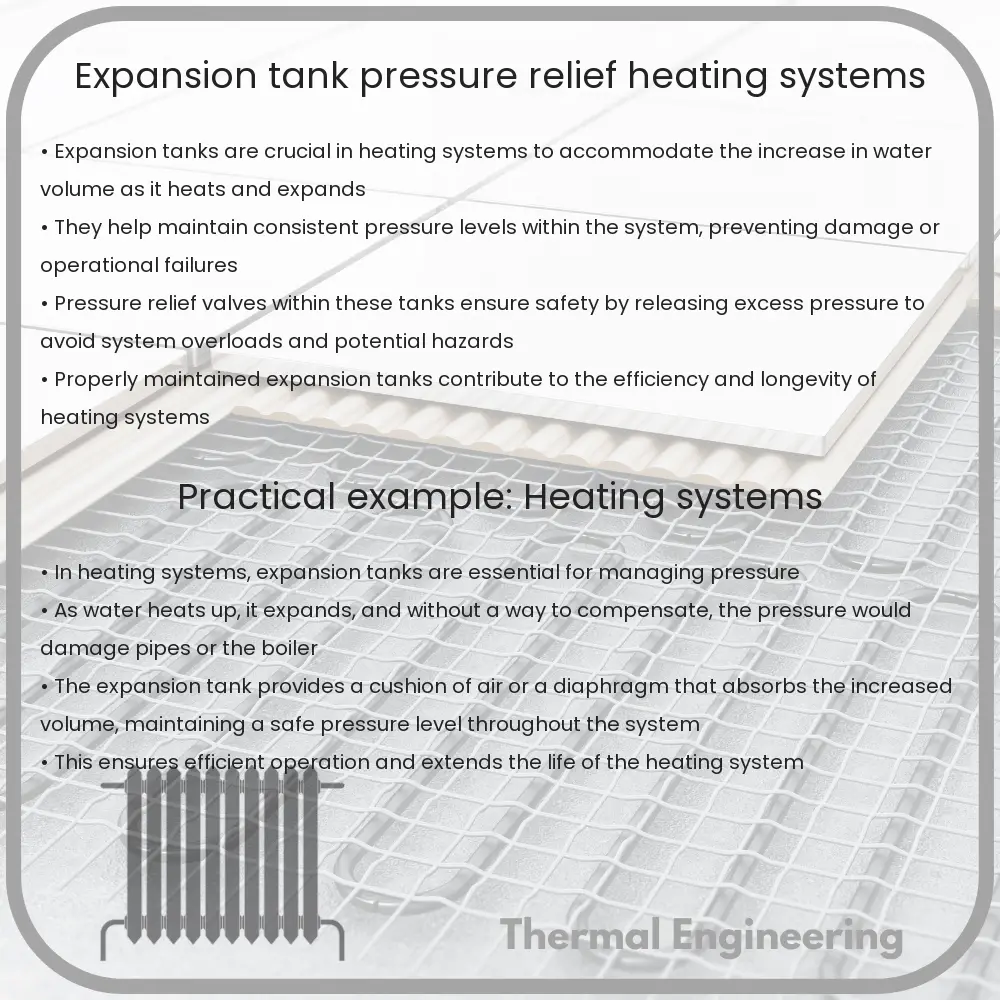Learn about expansion tanks in heating systems, their functions, how they work, types, and sizing for maintaining system efficiency and safety.

Understanding Expansion Tanks in Heating Systems and Pressure Relief
Expansion tanks are critical components in both heating systems and potable water applications, serving an essential function in maintaining pressure stability and system efficiency. This article will explore the purpose, working, and types of expansion tanks, and how they integrate into wider system operations.
What is an Expansion Tank?
An expansion tank is a small vessel used to protect closed water heating systems and domestic hot water systems from excessive pressure. The tank is partially filled with air, whose compressibility cushions shock and absorbs excess water volume created by system operation and thermal expansion.
How Do Expansion Tanks Work?
When water is heated, it expands. Without a means to compensate for this expansion, pressure in the system would continue to increase, potentially leading to pipe or component failure. The expansion tank allows the expanded water volume a place to go and prevents dangerous increases in pressure. Here’s a step-by-step look at the process:
- Water is heated: As water heats up in a system (e.g., a boiler or water heater), it expands.
- Pressure increase: This expansion leads to an increase in system pressure.
- Compression of air within tank: The expanded water enters the expansion tank and compresses the air in the tank.
- Pressure absorption: The air in the expansion tank absorbs this increased pressure, preventing any damage or excessive pressure within the main system.
Types of Expansion Tanks
There are two primary types of expansion tanks used in heating and plumbing systems:
- Diaphragm Tanks: These tanks separate the water and air with a diaphragm. This separation helps prevent water logging of the tank by keeping the air from being absorbed into the water and maintains system efficiency.
- Bladder Tanks: Similar to diaphragm tanks, bladder tanks contain a bladder that fully contains the air charge. Water flows around the bladder. This type too helps in maintaining the effectiveness of the air cushion and prevents the water from absorbing the air.
Calculating the Size of an Expansion Tank
The size of an expansion tank for a heating system depends on several factors including the volume of water in the system, the change in temperature, the initial pressure, and the maximum operating pressure. The basic formula to estimate the tank size is:
Volume = (V * dT * k) / (P1 – P0)
- V is the volume of fluid in the system.
- dT is the change in temperature.
- k is a constant based on the fluid expansion coefficient.
- P1 is the maximum pressure system can tolerate.
- P0 is the pre-charge pressure of the tank.
Conclusion
Expansion tanks play a crucial role in maintaining the longevity and efficiency of heating and water systems. By understanding the basics of how these tanks work and their functions, engineers and householders can ensure their systems are both safe and effective. Regular maintenance and calculations for proper sizing can prevent system failures and optimize performance.
For further detailed readings, one might want to explore more specialized engineering texts or installation manuals provided by manufacturers of specific heating systems or expansion tanks.